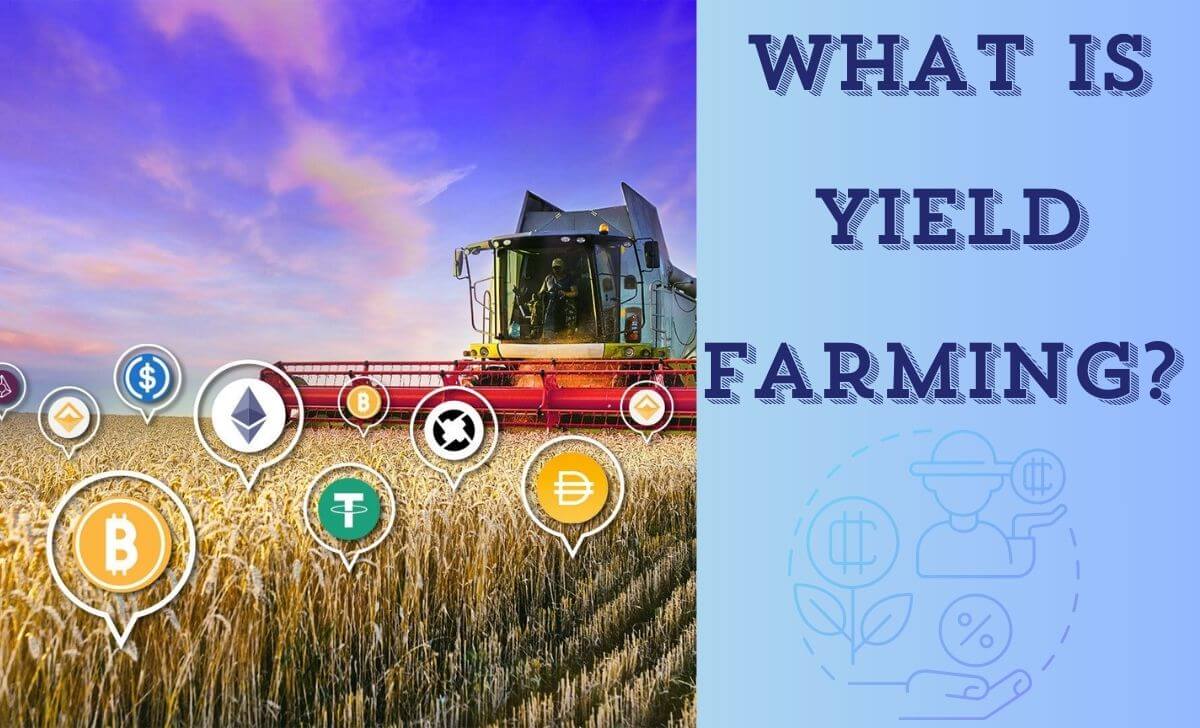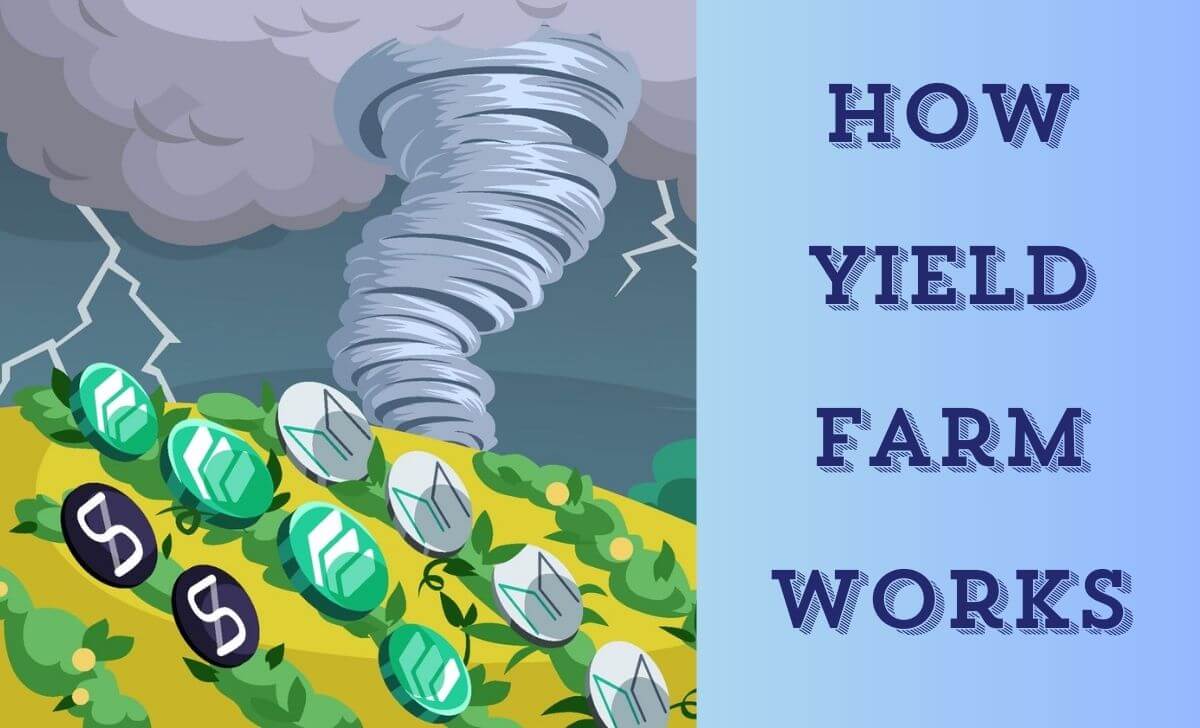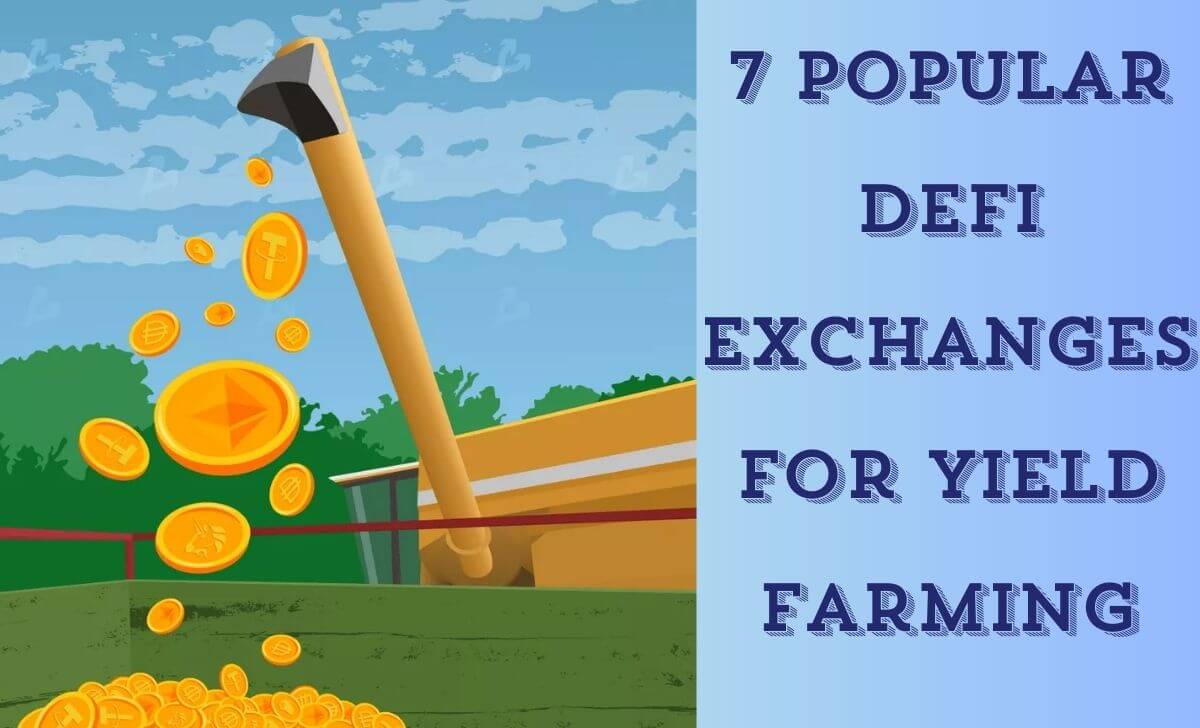Yield Farming is an attractive concept in the cryptocurrency world, allowing you to earn profits from holding digital assets. However, participating in Yield Farming also has many potential risks.
Follow this article by AZcoin to learn everything you need to know about Yield Farming, from basic to advanced, from benefits to potential risks.
What is Yield Farming?

Yield farming is a strategy in the DeFi space on the blockchain to maximize profits from providing liquidity to DeFi protocols. To perform yield farming, users typically deposit their assets into smart contracts in DeFi protocols, such as DEX or lending platforms and receive rewards in the form of yield.
History of Yield Farming
Below is the history of Yield Farming development by year:
- 2017: DeFi protocols such as MakerDAO and Compound began to appear, laying the foundation for the development of Yield Farming.
- 2019: Compound Finance launched its lending and borrowing model, marking the beginning of Yield Farming with liquidity provision activities to earn interest.
- 2020: DeFi summer began, with the explosion of Yield Farming. Projects such as Yearn.finance and SushiSwap attracted great attention with attractive reward programs.
- 2021: Yield Farming continued to develop with the rise of new protocols and platforms. Notable projects such as PancakeSwap on BSC and complex financial products such as cross-chain liquidity provision and new Yield Farming strategies.
- 2022: Yield Farming becomes more popular and is integrated into traditional financial protocols, along with the emergence of Yield Farming analysis and optimization tools.
- 2023: Development continues with the integration of Yield Farming into advanced DeFi products and a focus on improving security and mitigating risk.
- 2024: Yield Farming continues to grow and expand, with a focus on optimizing performance and improving compatibility between different blockchain networks.
How Yield Farm works

Yield Farming works by allowing users to deposit tokens into a liquidity pool on a DeFi protocol. When you deposit tokens into this pool, you receive a token representing your ownership in the pool, called an LP token.
You can then deposit these LP tokens into farms to earn rewards, which are typically paid in the protocol’s governance token. This process helps provide liquidity to DeFi platforms and users can earn profits from transaction fees and yield farming rewards.
Potential benefits and risks of Yield Farming

Yield Farming offers many benefits but also comes with potential risks. Below are some highlights:
Benefits
- High returns: Yield Farming can yield higher returns than traditional investments, especially when participating in new liquidity pools or potential DeFi projects.
- Increase liquidity: By providing liquidity to DeFi protocols, you help increase market liquidity, making trading easier and more efficient.
- Token rewards: Users can receive rewards in the form of governance tokens or other tokens, adding value to their investment.
Risks
- Price volatility: The price of tokens in the pool can fluctuate greatly, leading to the risk of asset loss.
- Smart contract risk: DeFi protocols rely on smart contracts and if there is a bug or security vulnerability, users can lose all their assets.
- Impermanent loss: When providing liquidity for token pairs with large price fluctuations, you may experience impermanent loss, reducing your returns compared to just holding the tokens.
- Project risk: Some DeFi projects may be unsustainable or even fraudulent, leading to the risk of asset loss.
How to join Yield Farming?

To participate in Yield Farming, you can follow these steps:
- Choose DeFi platform: Introduce yourself to various DeFi platforms and decide which one to use, such as Uniswap, SushiSwap on Ethereum or PancakeSwap on Binance Smart Chain.
- Connect wallet: Use a crypto wallet like MetaMask, Trust Wallet to connect to the selected DeFi platform.
- Choose token pair: Choose the token pair you want to provide liquidity for. For example: ETH/USDT, BNB/BUSD.
- Deposit tokens to liquidity pool: Deposit your tokens to liquidity pool to receive LP tokens, which represent your ownership in the pool.
- Stake LP tokens: Deposit LP tokens to farms on the platform to receive yield farming rewards.
- Monitor and manage: Monitor rewards and manage your assets regularly to optimize profits and minimize risks.
7 popular DeFi exchanges for Yield Farming

Below are the details of 7 popular DeFi exchanges for Yield Farming:
Uniswap
Uniswap launched in 2018 on Ethereum, is one of the most popular AMM exchanges. Users can provide liquidity for token pairs and earn rewards from trading fees with the UNI token. Uniswap’s trading fee is 0.3% and the exchange supports broker – free trading and offers a wide range of token pairs for users.
SushiSwap
SushiSwap was developed in 2020 and operates on multiple blockchain, including Ethereum and Binance Smart Chain. SushiSwap allows users to participate in yield farming and staking with the SUSHI token. The trading fee is 0.3%, with 0.25% distributed to liquidity providers and 0.05% for reward payments.
PancakeSwap
Launched in 2020 on Binance Smart Chain (BSC), provides liquidity and yield farming services with the CAKE token. This exchange has low transaction fees of only 0.2%, with 0.17% for liquidity providers and 0.03% for PancakeSwap. PancakeSwap stands out for its fast transaction speed and low fees.
Yearn.finance
Yearn.finance was founded in 2020 on Ethereum, automatically optimizing yield farming through vaults with the YFI token. The platform helps users optimize investment returns through automated farming strategies. Yearn.finance’s transaction fees vary depending on the vault and the specific strategy the user chooses.
Curve Finance
Developed in 2020 on Ethereum, focuses on providing liquidity for stablecoins and value-equivalent tokens. Curve Finance has low transaction fees of only 0.04% and incentivizes users to provide liquidity with the CRV token, making stablecoin trading more efficient.
Balancer
This exchange has been operating since 2020 on Ethereum, allowing users to create custom liquidity pools with different tokens and percentages. Users can earn rewards from trading fees and BAL tokens. Trading fees on Balancer range from 0.0001% to 0.5%, depending on the pool the user participates in.
Aave
Founded in 2017 on Ethereum, it provides decentralized lending and borrowing services. Aave allows users to deposit assets to earn interest or borrow assets at low interest rates. Lending rates on Aave vary according to the market, from 1% to 10% and users can earn rewards in AAVE tokens.
For more detailed information about the top DeFi exchanges, AZcoin – best crypto exchange 2024 is a useful resource.
Conclusion
Yield Farming is a promising concept in the cryptocurrency world, offering users the opportunity to earn high profits. However, participating in Yield Farming also requires understanding and caution. Hopefully, this article has provided you with useful information and helped you make the right decision when participating in the Yield Farming market.

I’m Jessi Lee, currently living in Singapore. I am currently working as a trader for AZCoin company, with 5 years of experience in the cryptocurrency market, I hope to bring you useful information and knowledge about virtual currency investment.
Email: [email protected]











